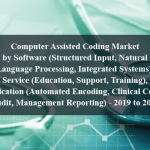OVERVIEW
The Clinical Microbiology Market is projected to grow significantly from USD 5.2 billion in 2024 to an estimated USD 9.8 billion by 2029, reflecting a CAGR of 13.5% during the forecast period. Clinical microbiology involves the study of microorganisms that cause infections in humans, with a focus on diagnosis, treatment, and prevention of infectious diseases. This market encompasses a wide range of products and services, including diagnostic instruments, reagents, consumables, and software solutions. The increasing prevalence of infectious diseases, advancements in microbiology techniques, and the growing demand for rapid diagnostic methods are driving the market’s growth.
The market’s expansion is also supported by rising healthcare expenditure, increased awareness of the importance of early disease detection, and the integration of advanced technologies such as AI and molecular diagnostics in clinical microbiology. However, challenges such as high costs of advanced diagnostic instruments, stringent regulatory requirements, and the complexity of microbiological testing need to be addressed to sustain market growth.
Geographically, North America and Europe dominate the clinical microbiology market due to their advanced healthcare infrastructure, significant investments in research and development, and high adoption rates of advanced diagnostic technologies. The Asia Pacific region is also expected to witness substantial growth, driven by increasing healthcare expenditure, growing awareness of infectious diseases, and the expanding healthcare sector.
Market Dynamics
Drivers:
The primary driver of the Clinical Microbiology Market is the increasing prevalence of infectious diseases. Infectious diseases remain a significant global health challenge, with pathogens such as bacteria, viruses, fungi, and parasites causing millions of infections annually. The rise of antibiotic-resistant strains and emerging infectious diseases further complicates the healthcare landscape. Clinical microbiology plays a crucial role in the diagnosis and management of these diseases, enabling healthcare professionals to identify pathogens, determine antimicrobial susceptibility, and guide appropriate treatment. The growing awareness of the importance of early and accurate diagnosis in managing infectious diseases is driving the demand for advanced clinical microbiology solutions. Additionally, advancements in microbiology techniques, such as molecular diagnostics, next-generation sequencing (NGS), and automated microbial identification systems, are enhancing the accuracy and efficiency of diagnostic processes, contributing to market growth.
Another significant driver is the growing demand for rapid diagnostic methods. Traditional microbiological testing methods, such as culture-based techniques, can be time-consuming, often requiring several days to yield results. Rapid diagnostic methods, such as polymerase chain reaction (PCR), immunoassays, and point-of-care (POC) tests, offer faster turnaround times, enabling timely clinical decision-making. The increasing adoption of rapid diagnostic methods in clinical settings is driven by the need for quick and accurate diagnosis, particularly in critical care and emergency departments. The integration of advanced technologies, such as AI and machine learning, is further enhancing the capabilities of rapid diagnostic methods, providing healthcare professionals with valuable insights and improving patient outcomes. The rising demand for efficient and timely diagnosis is fueling the growth of the clinical microbiology market.
Key Opportunities
The Clinical Microbiology Market presents numerous opportunities for growth and innovation, particularly in the development and integration of advanced technologies. One prominent opportunity lies in the increasing use of molecular diagnostics within clinical microbiology. Molecular diagnostics, such as PCR and NGS, offer high sensitivity and specificity, enabling the detection of low levels of pathogens and the identification of genetic mutations. The growing focus on personalized medicine and precision diagnostics is driving the adoption of molecular diagnostics in clinical microbiology. The integration of molecular diagnostics with AI and machine learning is expected to drive market growth by enabling more accurate and automated diagnostic processes. AI-powered algorithms can analyze large datasets, identify patterns, and provide actionable insights, enhancing the accuracy and efficiency of diagnostic processes.
The growing focus on infection control and antimicrobial stewardship presents another lucrative opportunity for the clinical microbiology market. Healthcare-associated infections (HAIs) and antibiotic resistance are significant public health concerns, requiring effective infection control measures and antimicrobial stewardship programs. Clinical microbiology laboratories play a critical role in these efforts by providing accurate and timely identification of pathogens and antimicrobial susceptibility testing. The increasing implementation of infection control and antimicrobial stewardship programs in healthcare settings is driving the demand for advanced clinical microbiology solutions. Vendors that offer comprehensive solutions for infection control and antimicrobial stewardship, including automated microbial identification systems, susceptibility testing platforms, and surveillance software, are well-positioned to capitalize on this market trend.
Restraints:
One of the significant restraints in the clinical microbiology market is the high cost of advanced diagnostic instruments. The development and deployment of sophisticated diagnostic technologies, such as molecular diagnostics and automated identification systems, require substantial investments in research and infrastructure. The high upfront costs and ongoing maintenance expenses can be a barrier to adoption, particularly for small and medium-sized healthcare facilities with limited budgets. Additionally, the cost of consumables and reagents further increases the total cost of ownership. To overcome this restraint, vendors need to offer cost-effective solutions and flexible pricing models that cater to the diverse needs of healthcare providers.
Stringent regulatory requirements and the complexity of microbiological testing pose another challenge for the clinical microbiology market. Diagnostic instruments and assays must undergo rigorous validation and approval processes to ensure their safety, efficacy, and reliability. Compliance with regulatory standards, such as the FDA’s Clinical Laboratory Improvement Amendments (CLIA) and the European Union’s In Vitro Diagnostic Regulation (IVDR), is essential for market entry and commercialization. The complexity of microbiological testing, which involves multiple steps and the potential for contamination, further complicates the regulatory landscape. Ensuring compliance with regulatory requirements and maintaining high-quality standards is critical for the successful deployment and operation of clinical microbiology solutions. Vendors must navigate these regulatory challenges and invest in quality assurance to meet the stringent requirements of the healthcare industry.
Regional Information:
-
- North America
North America remains a significant market for clinical microbiology solutions, characterized by advanced healthcare infrastructure, high adoption rates of advanced diagnostic technologies, and substantial investments in research and development. The region’s strong presence of leading biotechnology and pharmaceutical companies and the high focus on enhancing diagnostic capabilities drive market growth. The increasing prevalence of infectious diseases, such as COVID-19, influenza, and healthcare-associated infections, is propelling the adoption of clinical microbiology solutions in the region. Furthermore, stringent regulatory requirements and the need for robust infection control measures encourage healthcare providers to invest in advanced diagnostic instruments and assays. However, the high cost of advanced diagnostic technologies and regulatory complexities remain challenges that need to be addressed to fully capitalize on the market potential.
- Europe
Europe leads in the adoption of clinical microbiology solutions, driven by stringent regulatory requirements, significant investments in digital infrastructure, and a strong commitment to infection control and antimicrobial stewardship. The region’s focus on innovation and technological advancement fuels the demand for advanced diagnostic solutions. Countries like the UK, Germany, and France are at the forefront of implementing clinical microbiology technologies to enhance diagnostic capabilities and ensure compliance with regulatory standards. The European Union’s regulations, such as the IVDR, mandate stringent data protection and quality assurance measures, further driving market growth. However, economic uncertainties and the complexity of regulatory compliance necessitate strategic planning and risk management to navigate the market landscape effectively.
- Asia Pacific
The Asia Pacific region is expected to witness the highest growth rate in the clinical microbiology market due to rapid digital transformation, increasing healthcare expenditure, and the expanding healthcare sector. Countries like China, India, and Japan are investing heavily in clinical microbiology solutions to support business growth and enhance diagnostic capabilities. The region’s expanding middle class and rising disposable incomes are also contributing to the increasing adoption of clinical microbiology services in various sectors such as hospitals, diagnostic laboratories, and research institutes. Governments in the region are implementing initiatives to promote digitalization and support the growth of the healthcare economy, further driving market growth. However, challenges related to regulatory compliance, fluctuating economic conditions, and the need for skilled IT professionals necessitate localized strategies and market insights for successful market penetration.
Recent Developments:
In January 2024, BioMérieux(France) acquired LUMED(Canada), a Canadian software company, to enhance antimicrobial stewardship and infection control programs.
In February 2024, Becton, Dickinson and Company (US) partnered with Camtech Health (Singapore) to advance cervical cancer screening by offering the option for women in Singapore to self-collect a sample in the privacy of their own home.
Key market Players:
Thermo Fisher Scientific Inc.
bioMérieux SA
Becton, Dickinson and Company
Cepheid (Danaher Corporation)
Bruker Corporation
Frequently Asked Questions
1) What is the projected market value of the Clinical Microbiology Market?
– The Clinical Microbiology Market is expected to reach an estimated value of USD 9.8 billion in revenue by 2029.
2) What is the estimated CAGR of the Clinical Microbiology Market over the 2024 to 2029 forecast period?
– The CAGR is estimated to be 13.5% for the Clinical Microbiology Market over the 2024 to 2029.
3) Who are the key players in the Clinical Microbiology Market?
– Thermo Fisher Scientific Inc.
bioMérieux SA
Becton, Dickinson and Company
Cepheid (Danaher Corporation)
Bruker Corporation
4) What are the drivers for the Clinical Microbiology Market?
– The primary drivers for the Clinical Microbiology Market include the increasing prevalence of infectious diseases, the growing demand for rapid diagnostic methods, and advancements in microbiology techniques. These factors are contributing to the rising demand for clinical microbiology solutions. The integration of AI and molecular diagnostics is also driving market growth.
5) What are the restraints and challenges in the Clinical Microbiology Market?
– The high cost of advanced diagnostic instruments and stringent regulatory requirements are significant challenges in the market. These factors can limit the adoption of advanced microbiology technologies. Additionally, the complexity of microbiological testing and ensuring compliance with data protection regulations poses challenges that need to be addressed to ensure effective and secure diagnostic operations.
6) What are the key applications and offerings of the Clinical Microbiology Market?
– Clinical microbiology solutions are essential for diagnosing infectious diseases, identifying pathogens, and determining antimicrobial susceptibility. They support various applications such as microbial identification, molecular diagnostics, and rapid testing, enabling healthcare professionals to provide accurate and timely treatments. These solutions also play a crucial role in infection control and antimicrobial stewardship programs, helping to prevent the spread of infections and combat antibiotic resistance. Additionally, clinical microbiology supports research and development in medical and pharmaceutical fields.
7) Which region is expected to drive the market for the forecast period?
– Asia pacific is expected to have the highest market growth from 2024 to 2029
Why Choose Us?
Insights into Market Trends: Global Market Studies reports provide valuable insights into market trends, including market size, segmentation, growth drivers, and market dynamics. This information helps clients make strategic decisions, such as product development, market positioning, and marketing strategies.
Competitor Analysis: Our reports provide detailed information about competitors, including their market share, product offerings, pricing, and competitive strategies. This data can be used to inform competitive strategies and to identify opportunities for growth and expansion.
Industry Forecasts: Our reports provide industry forecasts, which will inform your business strategies, such as investment decisions, production planning, and workforce planning. These forecasts can help you to prepare for future trends and to take advantage of growth opportunities.
Access to Industry Experts: Our solutions include contributions from industry experts, including analysts, consultants, and subject matter experts. This access to expert insights can be valuable for you to understand the market.
Time and Cost Savings: Our team at Global Market Studies can save you time and reduce the cost of conducting market research by providing comprehensive and up-to-date information in a single report, avoiding the need for additional market research efforts.












